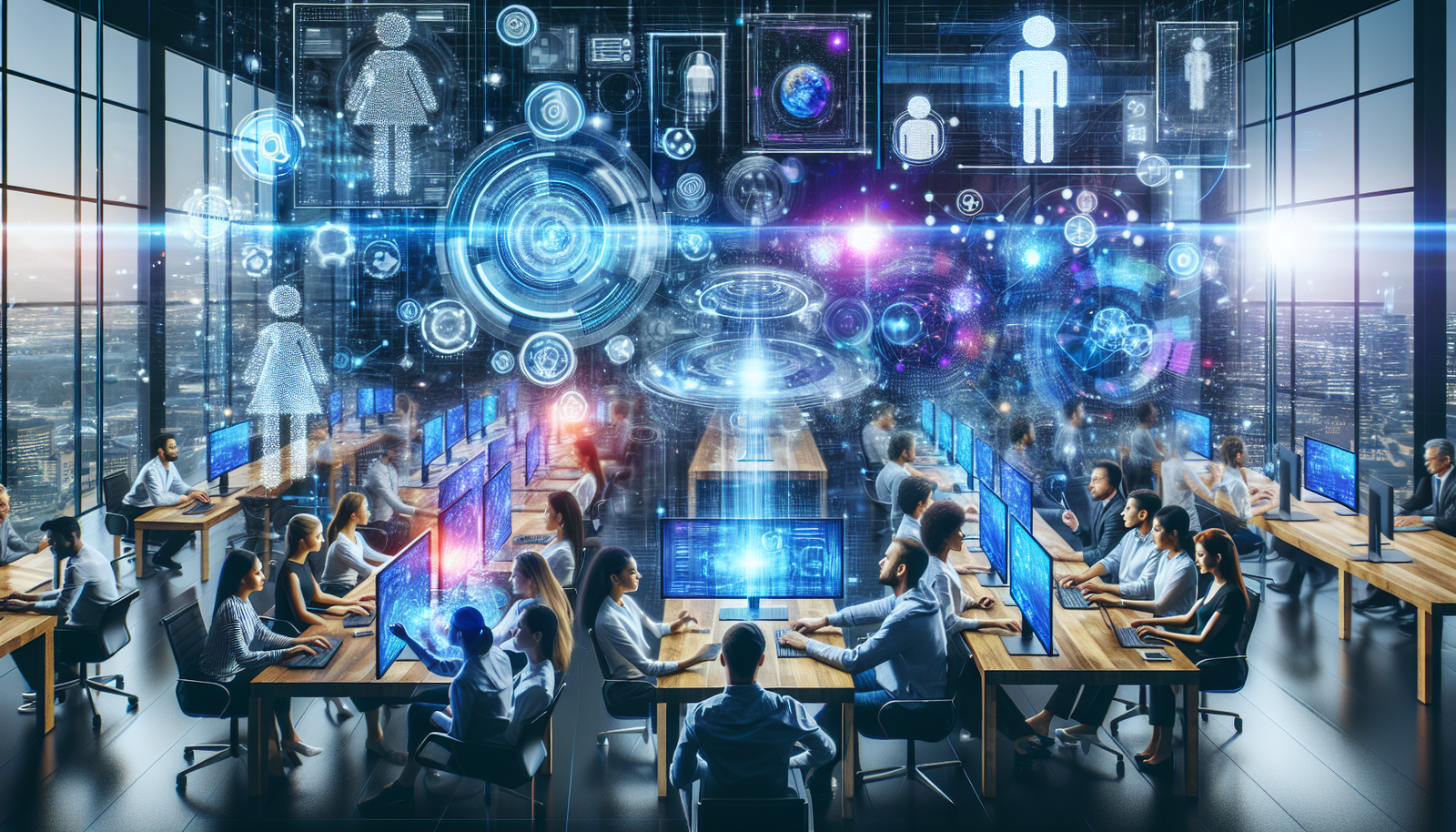Salesforce and Generative AI: A Bold Strategy
With the desire to make a significant mark in the field of generative AI, Salesforce displays ambitions that far exceed the simple framework of CRM. The company aims to become a provider of virtual collaborators, thus transforming the way companies approach customer interaction and automation.
Agentforce 2.0: A Significant Innovation
Agentforce 2.0, recently launched, represents a turning point in Salesforce’s strategy. The company highlights AI agents that do not merely function as simple tools, but act as true digital supports. With this approach, clients can develop agents based on their own data, thus offering unprecedented customization.
This version of the system abandons the notion of “co-pilots,” previously promoted, focusing instead on agents capable of handling low-value tasks, often relegated to call centers. With this transition, it becomes possible to reduce costs associated with managing customer interactions while increasing efficiency.
Advanced Features for Simplified Use
Agentforce 2.0 introduces pre-built skills and accessible customization tools for all. With the Agent Builder tool, creating agents is done in natural language, with no coding required. This innovation makes the technology accessible even to those without technical expertise, promoting rapid deployment across various sectors.
The developed agents rely on an advanced method: RAG (Retrieval Augmented Generation). This technique uses concrete data to minimize the risk of errors, or hallucinations, often seen in other systems. The ability to leverage unstructured data, such as PDF documents or other files, enhances the agents’ effectiveness.
An Intelligent Reasoning Engine
Integrated into the architecture of Agentforce, the reasoning engine Atlas has been optimized to dynamically adjust to the complexity of queries. When a user queries the system, Atlas strives to respond more quickly and evaluate the relevance of its responses, even in the face of more complex requests. This makes the system more responsive and tailored to the varied requirements of users.
Another major asset lies in the agents’ ability to interact proactively, providing real-time feedback to sales teams. This feature proves particularly useful during intensive outreach operations, offering a notable competitive advantage.
The Importance of Data Cloud One
Data Cloud One plays a central role in this strategy. It aggregates all data from various organizations within a company, thereby facilitating the acquisition of essential synergies. Salesforce’s multiple connectors allow for the integration of various systems, such as SAP or Workday, providing unmatched flexibility.
Agentforce 2.0 will be generally accessible by February 2025, marking a decisive step towards the widespread adoption of generative AI in companies.
Download and Costs: A Barrier to Overcome
Despite its advantages, the business model and pricing of Agentforce raise questions. While Salesforce claims a pricing “starting at two dollars per conversation,” covering costs for large-scale deployments remains a challenge. Initial estimates from clients create concerns regarding the actual savings compared to offshore call centers.
Infrastructure costs
FAQ about Agentforce 2.0: Salesforce and Virtual Collaborators
What is Agentforce 2.0 and how does it differ from previous versions?
Agentforce 2.0 is Salesforce’s new platform that allows the creation of AI agents capable of performing tasks autonomously, thus surpassing the traditional CRM framework. This includes advanced features such as simplified customization and pre-built skills, enabling users to create agents tailored to their needs.
How does Agentforce 2.0 utilize generative AI technology?
Agentforce 2.0 integrates generative AI techniques, such as RAG (Retrieval Augmented Generation), allowing agents to access concrete data. This helps reduce errors and provide more accurate responses by relying on real data sources, thereby limiting the risk of hallucinations in AI models.
What are the main capabilities of AI agents created with Agentforce 2.0?
AI agents can perform repetitive low-value tasks, such as supporting call centers, while offering personalized interactions with customers. They can also provide real-time feedback to sales teams, thus improving the efficiency of sales processes.
What is the importance of the Atlas reasoning engine in this new platform?
The Atlas reasoning engine allows Agentforce 2.0 to adapt to the complexity of queries. It enhances the responsiveness and relevance of responses, self-evaluating to ensure optimal performance, even in complex situations.
Does Agentforce 2.0 offer connectivity solutions with other systems?
Yes, Agentforce 2.0 is equipped with numerous connectors that allow it to connect with other enterprise systems like SAP or Workday, facilitating data integration and automation of processes across the organization’s entire ecosystem.
What factors should be considered regarding the pricing of Agentforce 2.0?
The starting price is announced as two dollars per conversation; however, companies must assess the overall costs associated with large-scale use and consider potential savings compared to other solutions, notably offshore call centers.
How will Salesforce demonstrate the success of Agentforce 2.0 to potential clients?
Salesforce aims to attract “early adopter” clients and relies on testimonials from clients such as Adecco and Indeed, who report significant gains in efficiency and reduced processing times due to the capabilities of Agentforce.






